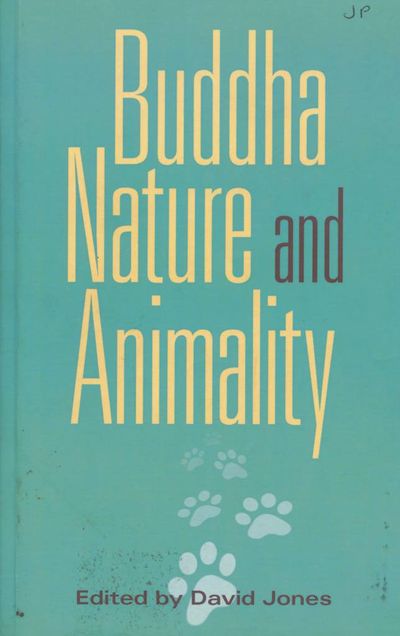No edit summary |
No edit summary |
||
| Line 9: | Line 9: | ||
*Introduction: ''Toward an Ecology of Compassion—Homo Specialis, Animality, and Buddha-Nature'' | *Introduction: ''Toward an Ecology of Compassion—Homo Specialis, Animality, and Buddha-Nature'' | ||
**{{i|David Jones|1}} | **{{i|David Jones|1}} | ||
Buddha Animals | *''Buddha Animals'' | ||
Jason M. Wirth 13 | **{{i|Jason M. Wirth|13}} | ||
Jataka, Pancatantra, and the Rhetoric | *''Jataka, Pancatantra, and the Rhetoric of Animalia in South Asia'' | ||
Thomas A. Forsthoefel 23 | **{{i|Thomas A. Forsthoefel|23}} | ||
Buddha-nature and Bodhicitta: Animals and Humans in | *''Buddha-nature and Bodhicitta: Animals and Humans in Dramatic Ensembles Intent upon Enlightenment'' | ||
Dramatic Ensembles Intent upon Enlightenment | **{{i|Peter D. Hershock|41}} | ||
Peter D. Hershock 41 | *''Animal Forms and Formlessness: The Protean Quality of Buddha Nature in Chinese Martial Arts'' | ||
Animal Forms and Formlessness: The Protean Quality | **{{i|Harriette Grissom|59}} | ||
Nature in Chinese | *''Does a Dog See Into its Buddha-Nature? Re-posing the Question of Animality/Humanity in Zen Buddhism'' | ||
Harriette Grissom 59 | **{{i|Bret W. Davis|83}} | ||
Does a Dog See Into its Buddha-Nature? Re-posing the Question | *''Asking the Question: Do Animals Have Buddha-Nature'' | ||
**{{i|Thomas Pynn|127}} | |||
Bret W. Davis 83 | *''Zen Eye Hunter, Zen Eye Hunted: Revealing the Animal Face of Buddha-Nature'' | ||
Asking the Question: Do Animals Have Buddha-Nature | **{{i|Brian Schroeder|149}} | ||
Thomas Pynn 127 | *''One Cell, Symbiosis, and the Buddha's Broken Karmic Wheel: A Legacy of an Ancient Bacterium'' | ||
Zen Eye Hunter, Zen Eye Hunted: Revealing the Animal Face | **{{i|Keiko Takioto Miller|165}} | ||
*''Animality and Desire in the Buddhist Monastic Code'' | |||
Brian Schroeder 149 | **{{i|Jennifer L. Manlowe|185}} | ||
One Cell, Symbiosis, and the Buddha's Broken Karmic Wheel: | *''Animal Buddhas'' | ||
A Legacy | **{{i|David Jones|195}} | ||
Keiko Takioto Miller 165 | *{{i|Index|205}} | ||
Animality and Desire in the Buddhist Monastic Code | |||
Jennifer L. Manlowe 185 | |||
Animal Buddhas | |||
David Jones 195 | |||
Index 205 | |||
|AddRelatedTab=No | |AddRelatedTab=No | ||
}} | }} | ||
Revision as of 17:43, 22 April 2020
Buddha Nature and Animality is about peaceful living. In discussions about the relation between humans and their animal relatives, a central theme is that Buddhism represents the most viable philosophical/religious alternative to the malaise surrounding us when we confront ecological problems. This recognition points to the notion of compassion. Karuna is given expression as an alternative to stewardship since stewardship too falls into the dualistic trap of privileging the human. Authors seek beyond the limits imposed by discourses of ethics and assume a more radical approach to seek the roots of the perspectives that allow the conceptual space for the problematic dialogues in the first place. Rather than viewing animals as distinct beings sharing our environs, authors attempt to give the animal soul back to spirituality. They argue for the naturally enlightened spontaneity arising in animal nature and that animal nature is Buddha-nature. This "animal-buddha" nature is fundamental to understanding Buddhism as a 21st century philosophy for living and dying. (Source: Jain Publishing Company)
| Citation | Jones, David., ed. Buddha Nature and Animality. Fremont, CA: Jain Publishing Company, 2007. |
|---|---|

